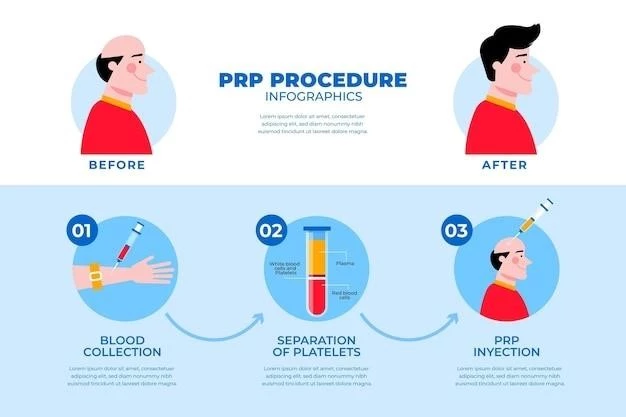Introduction to Rickettsialpox
Rickettsialpox is an infectious illness caused by Rickettsia akari and transmitted by mites. It manifests with a fever, a rash, and characteristic lesions. The disease was first identified in 1946.
Rickettsia akari is the causative agent of rickettsialpox, which is transmitted primarily by the house mouse mite, Liponyssoides sanguineus. The disease typically begins with the appearance of a vesicle at the site of the mite bite, eventually leading to the formation of an eschar. The characteristic rash of rickettsialpox consists of papulovesicular eruptions on the trunk, face, and extremities. This disease is relatively mild and is seldom fatal, with symptoms typically appearing 1 to 4 days after the onset of fever.

Clinical Presentation of Rickettsialpox
Rickettsialpox presents with vesicular rash, fever, and eschar formation. The disease manifests as a self-limited febrile illness with characteristic skin lesions.
Rickettsia akari and Transmission
Rickettsia akari is the bacterium responsible for causing rickettsialpox, a disease transmitted to humans through the bites of infected house mouse mites. This pathogen typically leads to the development of an eschar at the site of the mite bite, followed by the appearance of a vesicular rash on the body. Understanding the transmission dynamics of Rickettsia akari is crucial in preventing and managing cases of rickettsialpox.
Symptoms and Rash Characteristics
Rickettsialpox presents with a triad of symptoms including a vesicular rash, fever, and eschar formation. The rash typically consists of generalized, erythematous papulovesicular eruptions on various body areas;
Identifying Rickettsialpox
Rickettsialpox can be identified by the presence of a vesicular rash, fever, and the development of an eschar at the site of the mite bite. Physicians can diagnose the disease based on the characteristic clinical presentation and may conduct tests to confirm the presence of Rickettsia akari in the patient.
Epidemiology of Rickettsialpox
Rickettsialpox is caused by Rickettsia akari and predominantly circulates in urban areas such as the Balkan states, Korea, South Africa, Ukraine, and the United States. Infections primarily occur through contact with infected peridomestic rodents and their mites.
Global Distribution and Outbreaks
Rickettsialpox, caused by Rickettsia akari, has a global distribution primarily in urban centers in several countries, including the Balkan states, Korea, South Africa, Ukraine, and the United States. Outbreaks of rickettsialpox often occur after contact with infected peridomestic rodents and their mites, highlighting the importance of understanding the epidemiology of the disease to implement effective control measures.
Causes and Risk Factors
Rickettsialpox is caused by the bacterium Rickettsia akari, primarily transmitted through the bites of infected house mouse mites. The disease is linked to contact with peridomestic rodents.
Transmission and Vector
The transmission of rickettsialpox occurs through the bites of infected house mouse mites carrying the bacterium Rickettsia akari. These mites, particularly Liponyssoides sanguineus, play a crucial role in spreading the disease to humans. Understanding the transmission dynamics and vector involvement is essential in preventing and controlling the spread of rickettsialpox.

Treatment and Management
Rickettsialpox caused by Rickettsia akari can be managed with appropriate antibiotic therapies. The standard treatment includes the use of antibiotics such as tetracycline or doxycycline to effectively combat the bacterial infection.
Approaches to Treating Rickettsialpox
In the management of rickettsialpox, healthcare providers commonly prescribe antibiotics such as tetracycline or doxycycline to combat the bacterial infection caused by Rickettsia akari. Ensuring timely and appropriate antibiotic therapy is crucial in treating rickettsialpox effectively and preventing complications associated with the disease.
Prevention and Control Measures
Preventing rickettsialpox involves reducing exposure to infected house mouse mites by implementing effective rodent control measures. Avoiding contact with rodents and their habitats, as well as using insect repellents in endemic areas, can help prevent the transmission of Rickettsia akari and subsequent infection.
Strategies to Prevent Rickettsialpox
Preventing rickettsialpox involves implementing strategies to reduce exposure to infected house mouse mites. These strategies include maintaining good hygiene practices, eliminating rodent infestations, using insect repellents, and avoiding contact with potential mite habitats. Additionally, wearing protective clothing and promptly addressing any rodent issues can help minimize the risk of contracting rickettsialpox.
Complications and Prognosis
Rickettsialpox is a typically mild and self-limited disease, and severe cases are rare. The prognosis is generally favorable with appropriate treatment, and complications are uncommon. Symptoms typically resolve without long-term consequences.
Possible Complications from Rickettsialpox
Rickettsialpox is typically a self-limiting disease with a low likelihood of complications. While complications are rare, some individuals may experience more severe manifestations of the disease, particularly in cases with delayed or inadequate treatment. Prompt diagnosis and appropriate management are essential in minimizing the risk of potential complications associated with rickettsialpox.
History and Discovery of Rickettsialpox
Rickettsialpox, caused by Rickettsia akari, was first identified in 1946 after an outbreak in a New York apartment complex. Physician Robert Huebner played a significant role in the discovery of the disease.
Significant Events and Researchers
Rickettsialpox, caused by Rickettsia akari, was first identified in 1946 after an outbreak in a New York City apartment complex. The discovery of the disease and its causative agent involved key figures like Physician Robert Huebner and entomologist Charles Pomerantz, highlighting the collaborative efforts in understanding and managing rickettsialpox.
Comparison with Other Rickettsial Diseases
Rickettsialpox, caused by Rickettsia akari, presents with a unique vesicular rash and clinical course, distinguishing it from other rickettsial diseases like Rocky Mountain spotted fever and Pacific Coast tick fever. Understanding these differences is crucial for accurate diagnosis and appropriate management.
Distinguishing Rickettsialpox from Similar Illnesses
Rickettsialpox, caused by Rickettsia akari, can be distinguished from other rickettsial diseases by its unique febrile presentation, association with eschar formation, and characteristic papulovesicular rash. Recognizing these distinct clinical features is essential in accurately differentiating rickettsialpox from conditions like Rocky Mountain spotted fever and Pacific Coast tick fever.
Research and Advancements in Rickettsialpox
Research on rickettsialpox caused by Rickettsia akari focuses on improved diagnostics and treatment approaches. Recent advancements include investigating novel antibiotic therapies and developing rapid diagnostic tests to enhance early detection and management of the disease.
Current Studies and Developments
Ongoing studies on rickettsialpox caused by Rickettsia akari focus on enhancing diagnostic methods and exploring potential treatment advancements. Researchers are investigating new antibiotics and rapid diagnostic tests to improve the early detection and effective management of rickettsialpox, aiming to reduce complications and improve outcomes for affected individuals.
Clinical Cases and Incidences
Rickettsialpox, caused by Rickettsia akari, is a mite-borne infectious illness predominantly found in urban settings in various countries. Characterized by febrile symptoms, eschar formation, and a distinctive rash, rickettsialpox occurs following contact with infected house mouse mites and can be effectively managed with appropriate treatment strategies.
Reported Instances and Statistics
Rickettsialpox, a mite-borne infectious disease caused by Rickettsia akari, is relatively rare. In urban areas such as New York City, less than 30 cases are reported annually, highlighting the limited incidence of this condition. The disease typically manifests with mild symptoms, including fever, headache, muscle pains, and rash, emphasizing the importance of timely diagnosis and appropriate management.
on Rickettsialpox
Rickettsialpox, an infectious disease caused by Rickettsia akari and transmitted by mites, typically presents with unique clinical features such as a vesicular rash and eschar formation. While generally a mild and self-limiting illness, prompt diagnosis and appropriate treatment are crucial for successful management. Further research and advancements in diagnostic methods and treatment modalities continue to enhance our understanding and control of rickettsialpox.
